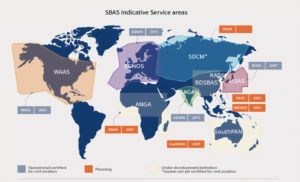The invention of self-driving cars marked the epitome of modern technological advancement. Despite this technological breakthrough in the automotive industry, many remain desired to increase the accuracy of sensors and perception systems installed on these vehicles. Modern automakers have options for the choice of sensors to use-either light-based Lidar radars or Tesla cameras. And each of these options has varying accuracy levels as well as cost implications.
LIDAR
LIDAR is a short form for light detection and ranging. It is a particular type of technology that uses invisible infrared laser light to determine an object’s exact distance on the earth’s surface. As soon as LIDAR radar emits light towards the target object, the time it takes for the reflected light to return to the radar is analyzed to determine the object distance. The exact process of determination of object distance is super-fast given the speed at which light travels. The resulting object distance is almost always accurate.
Whereas maximum safety can be guaranteed by using LIDAR technology, it’s still a costly approach. Moreover, the resulting 3D image has a lower resolution due to the sensor’s inability to see colours.
Tesla
Tesla’s approach to developing self-driving cars has only been geared towards the use of main cameras (eight cameras, to be exact), one sensor, and one radar. As much as Tesla’s approach has been applauded as cheap, car occupants’ safety remains a concern given the number of fatal accidents witnessed over the last couple of years. This approach demands a lot of processing power.
Cameras have been known to have a much higher image resolution than LIDAR radar. Additionally, they can see in different colours, although their operation is limited to changing external sources of light.
Comparisons between LIDAR and Tesla with regards to:
- Image resolution
Tesla cameras see objects in different colours, just like the human visual cortex. It’s this visual capability that produces high-resolution images. Conversely, LIDAR radar’s ability to see in different colours is only limited to black and red, resulting in low image resolution.
- Object distance accuracy
Because LIDAR radar uses invisible laser light to determine object distance and velocity, the resulting object distance is accurate and reliable. That is possible given the speed of light in the air. On the other hand, the calculated object distance from the use of cameras is inaccurate and subjective, given the fact that cameras have first to understand the scene.
Efficiency in different lighting conditions
The operational efficiency and effectiveness of camera use are limited to external changing light conditions. Their operation mode is just like the human eye, which has to handle and adapt to different lighting conditions. On the contrary, LIDAR radar’s operational efficiency is the same regardless of the time of the day.
- Cost implications
Generally, modern LIDAR technology is costly compared to the Tesla approach. The accuracy achieved in the calculation and the reliability of the information obtained make the technology costlier than Tesla’s approach. Tesla operates on a simple principle – “less is more”.
- Safety of car occupants
Because of the reliability of object distance information obtained from LIDAR technology, the occupants in the self-driving car are guaranteed maximum safety. On the flip side, Tesla cameras must first understand the scene before figuring out the distance of surrounding cars or other objects. This process itself is erroneous and jeopardizes the driver’s safety.
The bottom line
LIDAR is a type of radar technology that uses invisible laser light to determine an object’s distance and velocity. On the contrary, Tesla technology uses cameras and night-vision sensors to understand the surrounding scene to calculate object distance. Both these approaches for self-driving cars have their pros and cons. But would you prioritize safety over the cost implications of either approach in acquiring a self-driving car?




